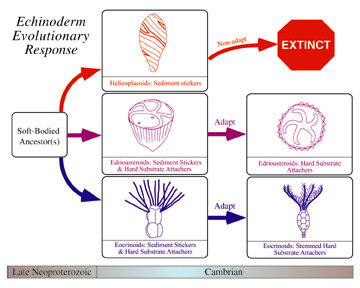

Figure 3. Evolutionary response of Cambrian sessile suspension-feeding echinoderms as part of the Cambrian substrate revolution. Arrows do not represent a direct evolutionary relationship between specific echinoderms shown, but imply a general evolutionary trend through the Cambrian within each of the groups examined, with these echinoderms serving as individual examples. Helicoplacoid drawing is modified from Paul and Smith (1984); specimen is 3 cm in height. For edrioasteroids, Camptostroma (left) is modified from Paul and Smith (1984); specimen is 5 cm in height. Edrioasteroid on right is a schematic of a typical attaching edrioasteroid, modified from Paul and Smith (1984); size is 5 cm in width. For eocrinoids, Lichenoides (left) is modified from Ubaghs (1967); specimen is approximately 2.5 cm in height. Eocrinoid on right is Tatonkacystis, modified from Sumrall et al. (1997); specimen is approximately 5 cm in height. Geological time not to scale and boxes do not represent the precise age range of the echinoderms they contain.